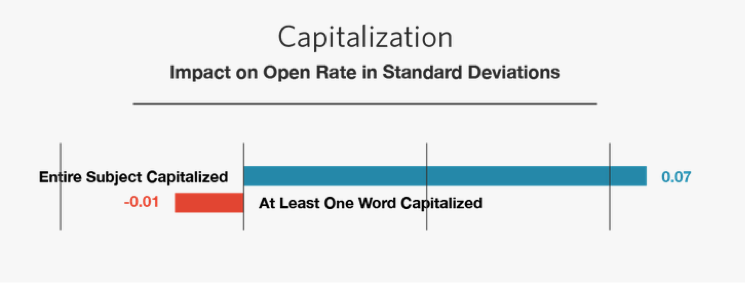 This is a guest contribution from Jorden Roper.
This is a guest contribution from Jorden Roper.
You know you’re a good writer, so why aren’t you landing the gigs that you want?
Well, it’s probably because you aren’t pitching your ideas properly.
Because – let’s face it – even if you’re the best writer in the world, you’ll get rejected every single time if you can’t craft an effective pitch.
If you’ve ever pitched, you already know the drill. You email the editor at the website you want to write for. Then…
You wait.
Hours turn into days. Days turn into weeks. Weeks turn into months, and by that point, you’ve probably given up.
But don’t let yourself give up on pitching completely. With a few simple tweaks to your pitching process, you can get more freelance writing work. Here’s how:
1. Spend time researching and preparing.
Crafting a good pitch takes time.
It’s not as simple as sitting down at your computer, throwing together an email in five minutes, and crossing your fingers in hopes that you’ll get a response from the editor. I mean, you can do it that way, but you aren’t going to get the results you’re looking for.
Instead, you’ll need to prepare quite a bit. The idea here is to gather the information you need to write the best pitch email possible.
I’ll give you an example. The post you’re reading right now is obviously a guest post. Here’s are a few things I did to prepare before I pitched my ideas to ProBlogger’s editor:
- Looked through lots of their existing blog posts to make sure I pitched a unique idea
- Followed the Problogger Twitter feed and interacted with their tweets
- Figured out ProBlogger’s target audience and started researching to pinpoint exactly what that audience would be interested in reading about
Make sure you take similar measures to prepare too. Doing so will help you get in the right mindset to create the most effective pitch.
And yes, the preparation process can be a bit time-consuming. But, preparing shows the editor that you aren’t just a random stranger looking for backlinks or any available writing job, which can make all of the difference!
2. Optimize your subject line.
Your subject line could determine whether or not your email is ever opened, so you need to make it good. But maybe you’re wondering – what do editors want to see in a subject line?
Kelsey Libert, VP of Marketing at Frac.tl, surveyed over 500 digital publishers to find out their preferences. Her survey showed that 42% of editors (the majority) preferred to see the content title and type in the subject line over anything else.
That means you can simply use this format:
Title of Content [Content Type]
Here’s an example:
5 Surefire Tips for Improving Your Pitches and Getting More Freelance Writing Work [Blog Post]
Doing this helps the editor immediately understand what type of content and subject matter you plan to write about, saving them a lot of time and frustration when they’re digging through a full inbox to look for a worthwhile pitch.
But what if you’re simply pitching yourself for a recurring gig (as opposed to pitching an article idea)?
In my experience, this subject line formula works best:
Hi [Editor’s Name], I’m A [Niche] Blogger Interested In Writing For You
So, if you’re pitching your ideas to an editor named Bryan who is looking for a blogger to write about travel topics, your subject line would look like this:
Hi Bryan, I’m A Travel Blogger Interested In Writing For You
This works for three reasons:
Personalization
First of all, personalized subject lines have been proven to deliver higher open rates. One Experian study showed that personalized emails delivered 26 percent higher open rates, and a MailChimp study on personalized subject lines yielded these results:
So, it’s definitely worth your time to track down the editor’s name. Not only does personalization give your email a higher chance of being opened – it shows the editor that you’ve done some background research on their publication.
Capitalization
While capitalizing every word in a subject line may seem like an insignificant detail, it actually does boost the chances of your email being opened. Take a look at MailChimp’s results when they tested the effect of capitalization on open rates:
Capitalizing every word might not affect open rates as much as personalization, but it’s still significant enough to matter. So, capitalize every word in your subject line next time you pitch, and see what happens!
Relevance
By adding your niche to the subject line instead of just calling yourself a writer or blogger, you immediately show the editor that you have the relevant experience they’re looking for. This immediately puts you at an advantage over applicants who force the editor to dig around in their email inbox to figure out which writers are a good fit.
3. Put yourself in the editor’s shoes when you write your email content
Ready for some tough love?
No editor wants to know your entire life story in your pitch email. You don’t need to use multiple gigantic paragraphs to explain why you’re an ideal choice – be brief and get straight to the point. Here’s what you should include in your email content:
- 1 or 2 short introductory paragraphs – These should quickly show that you’ve researched the publication and explain why you’re a great fit (focus on what you can offer the editor – not what they can offer you)
- A few brief bullet points explaining the extra benefits of working with you – Customize these as much as possible. For example, if an editor’s job posting says that they want an SEO whiz who is reliable and communicative, show how you meet all of those qualifications in three bullet points. (Tip: Grouping things in threes provides a greater impact, so always aim for three bullet points.)
- Some way you’re connected to the editor – Do you follow the publication on Twitter? Have you commented on their previous blog posts? Mention any connection to the publication/editor here to show that you’ve put effort into building a relationship.
Keep in mind that you’ll also need to follow any pitching instructions outlined in the publication’s guest post guidelines. If you don’t, you’re sure to frustrate the editor, which won’t exactly make a good first impression.
Now that we’ve covered what you should include while writing your email, let’s talk about what you shouldn’t do when trying to impress an editor and win more work:
- Be impersonal – Don’t open your email with “Dear Editor” or “To Whom it May Concern.” Take the time to figure out the editor’s name, and use it.
- Come off as arrogant/use meaningless jargon – Don’t say something off-putting like “I am a revolutionary writer who will write a life-changing post for you.” Instead, show how awesome a writer you are by including your best writing samples.
- Talk negatively about yourself – Don’t advertise your lack of confidence and what you can’t Your pitch should show what you can do for the editor and why you’re a good choice to do it.
- Pitch a press release for your business disguised as a blog post – Do I really need to explain how tacky this is? Ugh… Just don’t do it.
4. Pitch the right article ideas.
Remember, editors aren’t in the business of helping writers get published – they’re looking to provide their readers with useful content. Keep this in mind the entire time you’re writing your pitch, and show them what they’ll get from working with you by:
Including multiple pitches
Unless you’ve been specifically told otherwise, you’ll want to include several ideas for the editor to choose from. In fact, Frac.tl research shows that 70% of publishers would rather receive a set of ideas than a finished product on first contact.
And it’s easy to understand why – when you pitch several ideas, the editor has options and the ability to collaborate with you on the piece.
Keeping it relevant
Make sure that all of your ideas are relevant to the site, haven’t been done before on the publication you’re pitching to, and are likely to get results like social shares and traffic from the publication’s specific target audience.
Crafting compelling headlines
Your headlines have a huge effect on how your article will perform on social networks, so it’s important for you to make them good. You should pitch blog post ideas that solve a specific problem that the publication’s target audience is facing.
For example, 5 Tips for Freelance Writers wouldn’t be a good headline because it’s too vague and doesn’t solve a specific problem.
A better title would be Feeling Stuck? Here are 5 Productivity-boosting Secrets to Get You Writing Again because it addresses a common problem that the target audience (in this case, writers) faces. It also includes a number (list posts will always work) and an adjective (“productivity-boosting”) to entice the reader to click.
5. Proofread your email several times.
Yes, even the best writers make mistakes, but your email is the editor’s first impression of you, so you want it to be perfect. Make sure you get your grammar/spelling right!
Even one simple error could send your email to the trash can. So, always use a tool like Grammarly or the Hemingway App to check over your email before you send it.
That being said, you shouldn’t rely solely on writing tools. We all know that spellcheck isn’t immune to error, so if you’re unsure about your spelling/grammar, have an editor look over your email or do some quick research online to make sure your email is correct.
In Conclusion
If you’re a strong writer, you should be able get a steady flow of work. Put the tips outlined here into practice to start sending out better pitches, and you’re sure to see your success rate improve.
That being said, keep in mind that not every publication will respond right away, even if your pitch looks great. Don’t be afraid to follow up with the editor if you know your pitch was solid but you haven’t received a response.
And, most importantly, avoid letting rejection discourage you. Remember – just because one publication isn’t interested in your work doesn’t mean that the countless other publications out there are going to feel the same way!
What strategies have you used to land more freelance writing work? Let me know in the comments section below!
Jorden Roper is a blogger/copywriter for hire and the founder of Writing Revolt, where she writes about finding success as a freelance writer. Stay in touch by connecting with Jorden on Twitter!
The post 5 Easy Ways to Improve Your Pitches and Get More Freelance Writing Work appeared first on @ProBlogger.


No comments:
Post a Comment